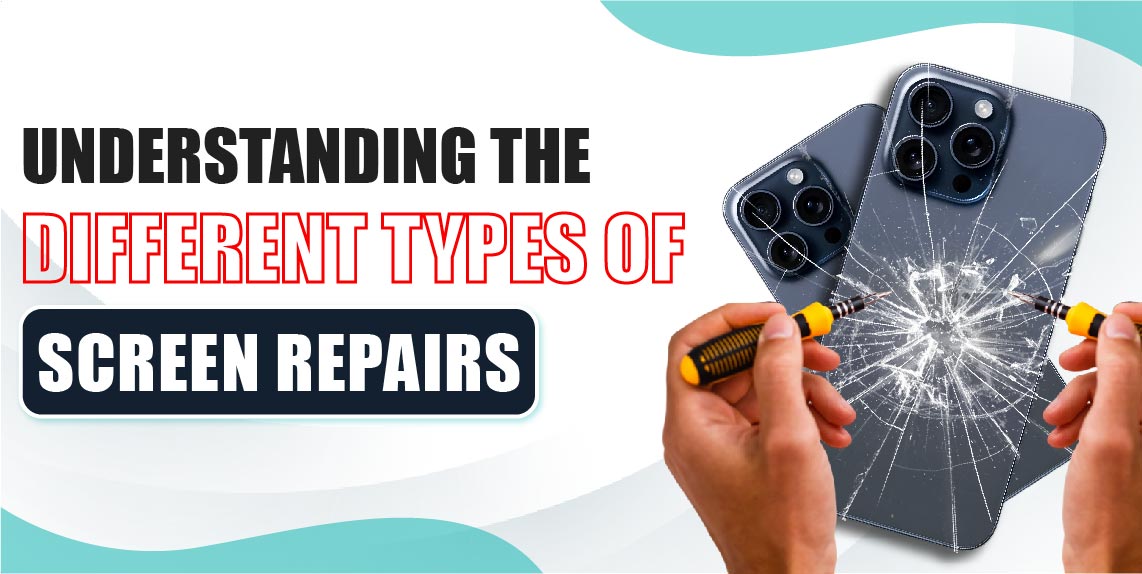
In our increasingly digital world, screens have become an integral part of daily life. From smartphones and tablets to laptops and monitors, these devices are essential tools for communication, entertainment, work, and more.
However, screens are also delicate and prone to damage. Understanding the different types of screen repairs is crucial for maintaining these devices and ensuring their longevity. This article explores the common types of screen damage, repair methods, and what you should know about each.
Before diving into the repair methods, it's essential to understand the various types of screen damage that can occur:
Cracked Screen
Description: The most common type of damage, characterized by visible cracks on the glass surface.
Causes: Typically results from drops, impacts, or pressure applied to the screen.
Shattered Screen
Description: A more severe form of a cracked screen where the glass is broken into multiple fragments.
Causes: High-impact drops or severe pressure.
Scratches
Description: Surface-level damage that doesn't affect the functionality but mars the screen's appearance.
Causes: Contact with sharp objects, such as keys or coins.
Dead Pixels
Description: Pixels that no longer light up, appearing as black spots on the screen.
Causes: Manufacturing defects, physical damage, or long-term wear.
Burn-in
Description: Permanent discoloration on parts of the screen where static images have been displayed for extended periods.
Causes: Prolonged display of static images, common in OLED and AMOLED screens.
Backlight Issues
Description: Areas of the screen appear dim or completely dark.
Causes: Faulty backlight components, power supply issues, or physical damage.
Touchscreen Malfunction
Description: The touchscreen becomes unresponsive or registers incorrect inputs.
Causes: Damage to the touch sensor layer, software glitches, or hardware failures.
Depending on the type and extent of the damage, different repair methods are employed. Here are the primary types of screen repairs:
When Needed: For cracked or shattered screens where only the glass layer is damaged, and the display underneath is functioning correctly.
Process: Involves carefully removing the broken glass and replacing it with a new one. Specialized tools and adhesive are used to ensure a secure fit.
Considerations: Glass-only replacement is typically less expensive than full-screen replacements but requires precision to avoid damaging the underlying display.
When Needed: When both the glass and the display are damaged, or if the device uses a fused glass/display unit (common in many modern smartphones).
Process: The entire screen assembly, including the glass, touch sensor, and display, is replaced. This ensures that all components are working correctly.
Considerations: More expensive than glass-only replacements but necessary for extensive damage. Ensures full restoration of display quality and touchscreen functionality.
When Needed: When the touchscreen functionality is compromised, but the display itself is still intact.
Process: The digitizer, the layer responsible for detecting touch, is replaced. This can be challenging as it often involves delicate disassembly.
Considerations: Ensure that the new digitizer is compatible with the device. Precision is critical to avoid additional damage.
When Needed: For screens with dead pixels, burn-in, or backlight issues. LCD (Liquid Crystal Display) and OLED (Organic Light-Emitting Diode) screens have different repair processes.
Process: The entire display panel is replaced. For LCDs, this includes the backlight and liquid crystal layers. For OLEDs, it involves the organic material layers that emit light.
Considerations: OLED replacements are generally more expensive due to their advanced technology. Ensure high-quality replacement parts to maintain display performance.
When Needed: When the screen is dim or dark, indicating a problem with the backlight.
Process: Identifying and replacing faulty backlight components, such as LEDs or the power supply. This may involve intricate soldering and component replacement.
Considerations: Requires expertise in electronics. Incorrect repairs can lead to further damage.
When Needed: For dead pixels or minor display anomalies.
Process: Sometimes, software solutions can fix stuck pixels. Hardware repairs involve manipulating the display to stimulate pixel recovery.
Considerations: Pixel repair success varies. Replacement might be more effective for extensive issues.
While some minor repairs, such as fixing small scratches or using pixel-fixing software, can be attempted at home, most screen repairs require professional expertise. Here are some points to consider:
DIY Repairs: Cost-effective but risky. Lack of proper tools and experience can lead to further damage.
Professional Repairs: More reliable and usually come with a warranty. Professionals have the necessary tools, experience, and access to high-quality parts.
Prevention is always better than repair. Here are some tips to protect your screens:
Use Screen Protectors: High-quality tempered glass or film protectors can absorb impact and prevent scratches.
Protective Cases: Cases that provide a raised edge around the screen can prevent damage from drops.
Careful Handling: Avoid placing devices in pockets or bags with sharp objects. Handle with care to avoid drops.
Understanding the different types of screen repairs is essential for maintaining your devices and ensuring their longevity. Whether dealing with a minor scratch or a shattered screen, knowing your options can help you make informed decisions about repairs. While DIY repairs can save money, professional services offer reliability and peace of mind. Ultimately, taking preventive measures to protect your screens is the best way to avoid the need for repairs in the first place.